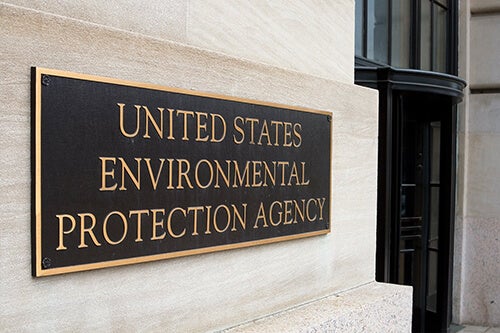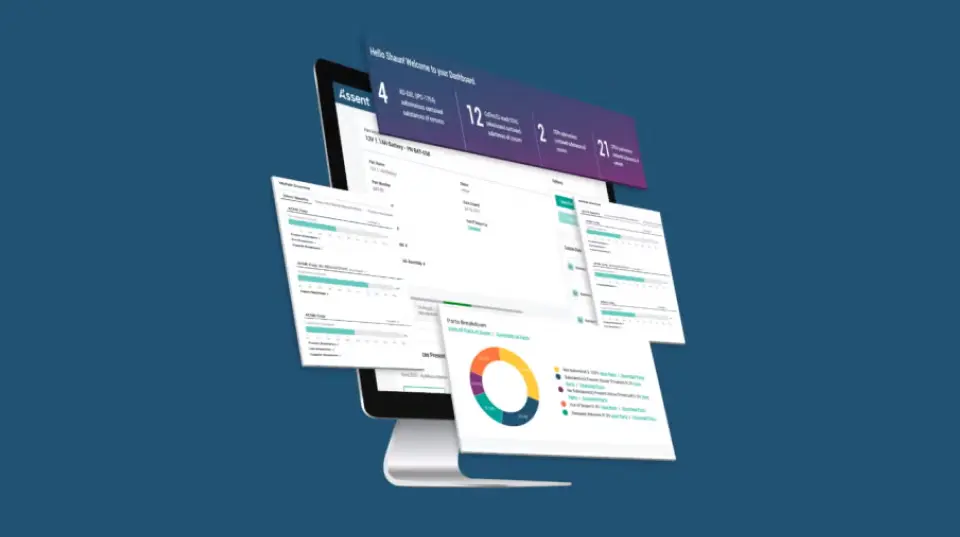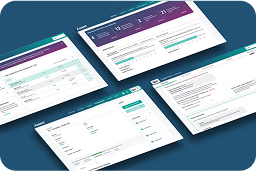Navigating the European Union Waste Framework Directive (WFD) and the Registration, Evaluation, Authorisation and Restriction of Chemicals (REACH) Regulation can be complicated. REACH Compliance and the WFD are both focused on managing the impacts of chemicals in products on human health and the environment. Both can affect your ability to bring goods to the EU market. Both rely on supply chain data about hazardous substances. Yet they each have distinct goals and reporting requirements.
Let’s look at how these two pieces of legislation overlap, particularly around substances of very high concern (SVHCs) in your products, and explain what it means for your business.
Regulatory Overview: REACH vs. WFD
REACH came into effect to protect human health and the environment from hazardous chemicals in products. Under the REACH SVHC declaration process, manufacturers and suppliers must identify, register, report, get authorization to use, and/or restrict substances in their products, especially if these substances exceed certain concentrations.
However, REACH fell short when it came to managing hazardous chemicals at the product end of life. By the time waste operators receive end-of-life products, they may have been in circulation for anywhere between five to 15 (or more) years. This made it nearly impossible to know what REACH SVHCs were in the materials and what environmental or safety concerns needed to be addressed.
To reduce the burden on waste operators, the European Commission created the Waste Framework Directive. The WFD rolled out processes to regulate end-of-life management, focusing on recycling and safe disposal. A 2018 revision to the WFD mandated the creation of the Substances of Concern in articles, as such or in complex objects (Products) (SCIP) database, a centralized registry for waste operators to look up historic data once the product enters the waste stream.
Where REACH & WFD Meet: SVHC Reporting
The primary overlap between REACH and WFD is tracking and reporting SVHCs. Under both regulations, businesses must monitor the presence of SVHCs listed on the REACH Candidate List. This is an official SVHC list of chemicals identified by the European Chemicals Agency (ECHA) as hazardous to human health or the environment.
Substances are added to this SVHC substances list after a detailed evaluation process, where ECHA, EU member states, or the European Commission identify chemicals that are carcinogenic, mutagenic, toxic to reproduction, endocrine disrupting, or persistent and bioaccumulative. Once listed, these substances trigger specific legal obligations for companies that use them.
Under REACH, if you use one or more metric tons per year of any SVHC that isn’t already registered with ECHA, you’ll need to conduct a risk assessment and register it. If you’re using a substance listed on the Candidate List and it’s present above the 0.1% weight by weight (w/w) threshold, you must notify ECHA. You’ll also need to obtain authorization from ECHA to use any SVHC on the REACH Authorisation List (Annex XIV) and ensure you aren’t using substances on the REACH Restricted Substances List (Annex XVII).
Under the WFD, it’s about ensuring waste handlers know what hazardous substances they’re dealing with. All companies placing products on the EU market containing SVHCs in concentrations above the 0.1 percent weight by weight (w/w) threshold are responsible for submitting documentation into the SCIP database. This includes manufacturers, assemblers, importers, and distributors.
For both, the Candidate List of SVHCs is at the heart of compliance. But how you apply SVHC data differs.
Waste Framework Directive & REACH Compliance Best Practices
Managing compliance with REACH and the Waste Framework Directive at the same time can be challenging, not only because they have detailed data requirements but also because they are constantly evolving as the list of SVHCs grows. The compliance requirements are a moving target that get more complicated every six months.
To make your compliance program more efficient (and your life easier), prioritize a holistic approach to tracking SVHCs across your supply chain rather than building separate programs for WFD and REACH. You need to know which SVHCs are in the materials and articles in your supply chain, along with their concentrations. From there, you have the foundation for REACH compliance and your SCIP database submission(s).
To improve your compliance program, don’t forget to:
- Maintain up-to-date records of SVHCs in your supply chain
- Communicate clearly with suppliers about ECHA substance compliance reporting obligations. You may need to educate them about the SVHC declaration process and what’s reportable
- Make it easy for suppliers to share SVHC data
- Use automation and supply chain sustainability management technology to handle large volumes of data efficiently
The Assent Sustainability Platform simplifies these tasks significantly. We help you identify and track SVHCs in your supply chains, provide a defensible audit trail, and ensure ongoing compliance as REACH and WFD requirements evolve.
Stay Ahead With Reliable Supply Chain Data
Compliance with REACH and the Waste Framework Directive doesn’t have to double your workload. With the right tool and a proactive approach, you can simplify compliance tasks, reduce your risk, and ensure you have the SVHC data to meet the requirements of both regulations.
Ready to streamline your compliance efforts for both REACH and the Waste Framework Directive? Book a personalized demo today to see how Assent’s AI-enhanced solution can simplify your regulatory processes and keep you confidently ahead of evolving requirements.
REACH Compliance & WFD FAQ
What is REACH?
REACH stands for Registration, Evaluation, Authorisation and Restriction of Chemicals. It’s a European Union regulation designed to protect human health and the environment by controlling hazardous chemicals in products. Companies must identify and manage the risks linked to substances of very high concern (SVHC) they manufacture or place on the EU market.
What is REACH compliance?
REACH compliance means ensuring your products meet EU requirements for hazardous chemicals. This includes registering substances with the European Chemicals Agency (ECHA), notifying them if you’re using a SVHC substance listed on the Candidate List and it’s present above the 0.1% weight by weight (w/w) threshold, and obtaining authorization for restricted substances. Accurate supply chain data is critical for compliance.
What is the Waste Framework Directive (WFD)?
The Waste Framework Directive (WFD) is an EU law focused on safe handling and environmental responsibility during product end of life. It requires companies placing products on the EU market to report SVHCs found in their products into a centralized system, called Substances of Concern In articles as such or in complex objects (Products)(SCIP) database, giving waste operators visibility into SVHC in products they handle.
What is SCIP?
The Substances of Concern In articles as such or in complex objects (Products)(SCIP) database was created under the WFD. to collect data about SVHCs in products so waste handlers know what hazardous substances they might encounter during recycling or disposal. If your product contains SVHCs above 0.1% w/w, you must submit a SCIP dossier.















